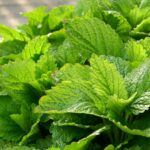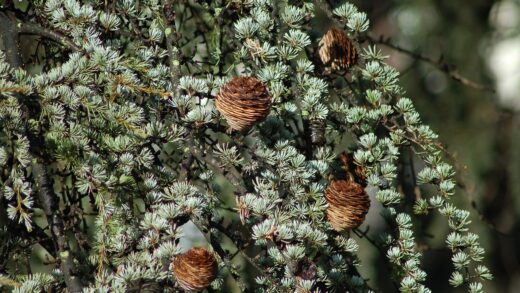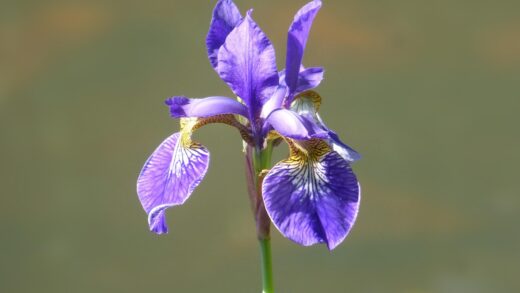The successful establishment and multiplication of the African lily begin with a thorough understanding of the correct planting techniques and propagation methods. Whether starting with a new nursery-grown plant, a bare-root rhizome, or dividing an existing clump, the initial steps taken will significantly influence the plant’s future health and flowering capacity. Proper site selection, soil preparation, and planting depth are fundamental principles that lay the groundwork for a vigorous and resilient plant. By adhering to best practices, gardeners can ensure their African lilies not only survive but thrive, creating spectacular displays for years to come.
When planting a new African lily, timing is a critical element for success. The ideal time to plant is in the spring, after the danger of the last frost has passed. This allows the plant the entire growing season to establish a robust root system before it faces the challenges of winter. Planting in spring gives the rhizomes the advantage of warming soil and increasing daylight hours, which are natural triggers for new growth. While autumn planting is possible in milder climates, it carries a greater risk of the plant failing to establish sufficiently before the onset of cold, wet weather, which can lead to rot.
The process of planting requires careful attention to detail to avoid common pitfalls. For container-grown plants, the hole should be dug to the same depth as the pot and approximately twice as wide, allowing the roots to spread into the surrounding soil. For bare-root rhizomes, it is crucial to position them at the correct depth; the crown, where the leaves emerge, should sit just at or slightly above the soil level. Planting too deeply is a frequent error that can lead to the crown rotting, preventing the plant from developing properly.
After positioning the plant in the prepared hole, the soil should be backfilled gently but firmly around the roots, eliminating any large air pockets that could cause the roots to dry out. Once planted, a thorough watering is essential to settle the soil and provide immediate hydration to the root system. This initial watering helps to establish good contact between the roots and the soil, which is vital for the uptake of water and nutrients. Following this, a consistent watering schedule should be maintained throughout the first growing season to support the plant’s establishment.
Selecting the right location
Choosing the optimal location for planting an African lily is one of the most important decisions for its long-term success. These plants are native to sunny, open environments and require a position that receives a minimum of six hours of direct sunlight per day. Full sun exposure is the key to unlocking their full flowering potential, as it fuels the photosynthetic process necessary to produce strong growth and an abundance of blooms. A south or west-facing aspect is typically ideal in most garden settings, providing the intensity and duration of light that these plants crave.
More articles on this topic
In addition to ample sunlight, the chosen site must offer excellent drainage. The fleshy, rhizomatous roots of the African lily are highly susceptible to rot if they are left in cold, waterlogged soil. Therefore, it is essential to avoid low-lying areas of the garden where water tends to collect, particularly during winter. Planting on a gentle slope or in a raised bed can be an effective strategy to naturally improve drainage. Before planting, it is always wise to assess the soil’s drainage capacity by digging a hole and observing how quickly water disappears.
The physical space and air circulation around the plant are also important considerations. While African lilies look impressive planted in dense clumps, they still require adequate air movement to help prevent the development of fungal diseases. Good air circulation allows the foliage to dry more quickly after rain or irrigation, reducing the risk of pathogens taking hold. When planning the layout, consider the mature size of the chosen cultivar to ensure that the plants will not become overly crowded as they grow.
Finally, consider the plant’s visibility and role within the overall garden design. With their tall, elegant flower scapes and striking blooms, African lilies make excellent focal points in borders, as specimen plants in containers on a patio, or planted in dramatic drifts. Placing them where their unique architectural form can be appreciated, such as against a contrasting backdrop of a wall or fine-textured foliage, will maximize their aesthetic impact. The right location not only meets the plant’s horticultural needs but also showcases its remarkable beauty.
Preparing the soil for planting
Thorough soil preparation is a non-negotiable step for successfully establishing African lilies, whether they are being planted in garden beds or in containers. The primary goal is to create a growing medium that is both rich in nutrients and exceptionally well-draining. For garden planting, begin by digging over the chosen area to a depth of at least 30 centimeters, breaking up any compacted soil to improve its structure and aeration. This process makes it easier for the plant’s roots to penetrate deeply and establish a strong foundation.
More articles on this topic
The next step is to amend the soil to enhance its fertility and drainage properties. For heavy clay soils, which are prone to waterlogging, incorporating generous amounts of horticultural grit and organic matter is essential. Materials such as well-rotted garden compost, leaf mould, or manure will improve the soil structure, creating more air spaces and facilitating the free movement of water. In overly sandy soils, which drain too quickly, adding organic matter will help to improve its water-retention capacity without compromising drainage.
The ideal soil pH for African lilies is in the range of slightly acidic to neutral, typically between 6.0 and 7.0. While the plants are relatively tolerant of a range of soil conditions, they will perform best when the pH is within this optimal window. It is worthwhile to conduct a simple soil test to determine the existing pH and amend it if necessary. For instance, lime can be added to raise the pH of acidic soils, while sulfur can be used to lower the pH in alkaline conditions, though amendments should always be made gradually and according to package instructions.
For container cultivation, using a high-quality, loam-based potting mix is recommended as a starting point. John Innes No. 2 or No. 3 composts are excellent choices, as they provide good structure and nutrient content. To further improve drainage, which is even more critical in the confined environment of a pot, this compost should be mixed with about one-third part horticultural grit or perlite. This custom blend will create the perfect balance of moisture retention and sharp drainage that is required for a healthy root system.
The process of division
Division is the most common and reliable method for propagating African lilies, allowing you to create new plants from a mature, established clump. The best time to undertake this task is in the spring, just as new growth is beginning to emerge. This timing allows the newly created divisions the entire growing season to recover and establish themselves before the onset of winter. While division can also be done immediately after flowering in late summer, spring division generally yields better results and faster establishment.
To begin the process, the entire clump must be carefully lifted from the ground or removed from its container. Use a garden fork to gently lever the clump out of the soil, taking care to minimize damage to the fleshy roots. Once the clump is exposed, shake or wash off the excess soil to get a clear view of the root system and the individual crowns. This will make it easier to identify the natural points of division and to separate the sections without causing unnecessary harm to the plant.
Using a sharp, clean knife, a spade, or even two garden forks placed back-to-back, divide the large clump into smaller sections. Each new division must have at least one or two healthy growing points or ‘fans’ of leaves, along with a substantial portion of the rhizome and attached roots. It is better to create a few larger, more robust divisions than many small, weak ones, as the larger sections will establish more quickly and are more likely to flower in their first year. Discard any old, woody, or non-productive parts of the central rhizome.
Once the divisions have been made, they should be replanted as soon as possible to prevent the roots from drying out. Plant them at the same depth as they were previously growing, ensuring the crown is at or just above the soil surface. Water the newly planted divisions thoroughly to settle the soil around the roots. It is important to keep them well-watered throughout their first season as they establish. Do not be discouraged if the divisions do not flower in their first year after planting; they are directing their energy towards developing a new, strong root system.
Growing from seed
Propagating African lilies from seed is a rewarding, albeit lengthy, process that allows for the creation of a large number of new plants. It is important to note that plants grown from the seed of hybrid cultivars will not necessarily be identical to the parent plant, leading to potentially exciting variations in flower color and form. Seed should be collected from the spent flower heads once the pods have turned brown and started to split open. The black, papery seeds can then be easily extracted from the dried pods.
The optimal time to sow African lily seeds is in the spring. The seeds can be sown in trays or small pots filled with a well-draining, seed-starting compost. Lightly cover the seeds with a thin layer of compost or vermiculite, as some light can aid in germination. Water the compost gently but thoroughly, ensuring it is moist but not saturated. To maintain a humid environment, which encourages germination, the seed tray can be covered with a clear plastic lid or placed inside a plastic bag.
Place the seed tray in a warm, bright location, but out of direct sunlight, which can scorch the delicate seedlings. A consistent temperature of around 21°C (70°F) is ideal for germination. The seeds can be slow and sometimes erratic to germinate, with seedlings appearing anywhere from a few weeks to several months after sowing. It is important to maintain patience and keep the compost consistently moist throughout this period. Once the seedlings have germinated, remove the plastic covering to improve air circulation.
After the seedlings have developed their first true leaves and are large enough to handle, they can be carefully pricked out and transplanted into individual pots. Use a well-draining, loam-based potting mix for this stage. Continue to grow the young plants on in a bright, frost-free location, potting them on into larger containers as they grow. It is a slow process, and plants grown from seed will typically take three to five years, or sometimes longer, to reach a sufficient size and maturity to produce their first flowers.
















